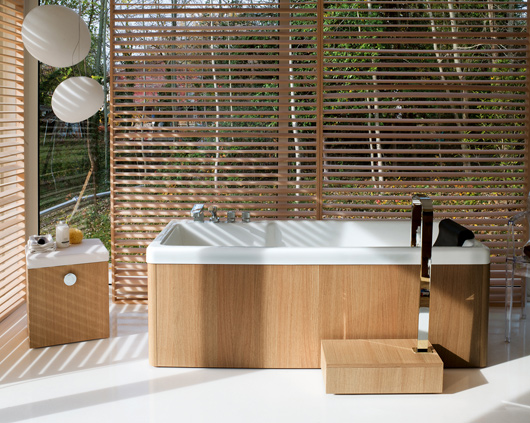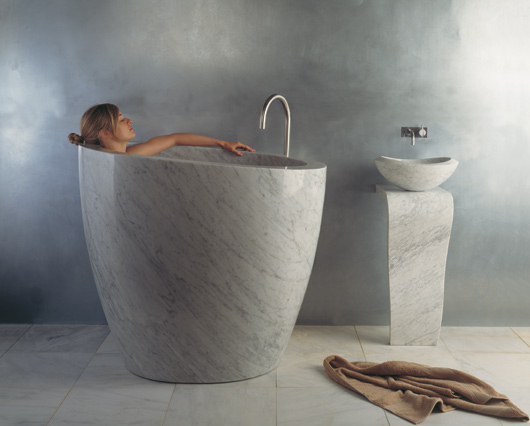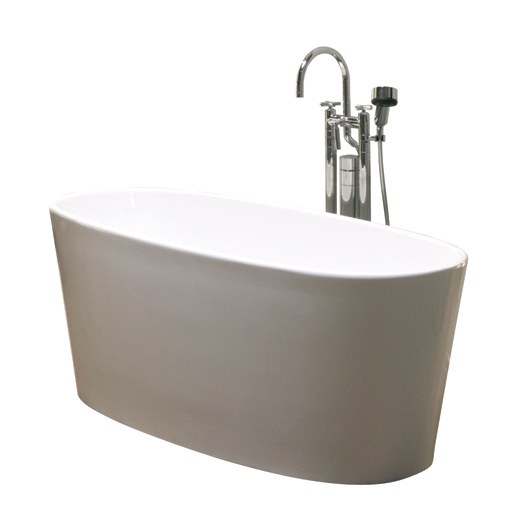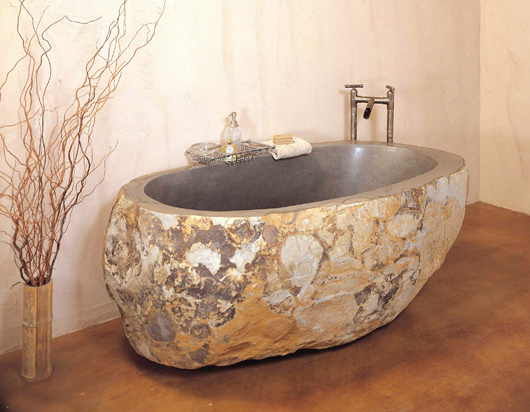Depth, functionality, design and size are all things to consider when purchasing a bathtub. But let’s not forget material. Below is a sampling of stylish tubs made from different sources that are certain to delight.
Wood: Oak. Ash. Brazilian Cherry. Walnut. For centuries, these and other hardwoods have been preferred for fine furniture, cabinets, flooring and millwork. But now they are making their way into the bathroom. Laufen’s Bathtub from the Lb3 Collection by designers Ludovica+Roberta Palomba sports a wood surround and step stool in wengé, oak or white.
Marble: Documentation of the first personal bathtub goes back to the Isle of Crete in ancient Greece. Wealthy Roman citizens bathed frequently in ornately decorated bathing rooms, in which marble was used for the bathtubs. Stone Forest brings marble bathtubs up to speed with their Oval Soaking Tub. Sleek lines define this minimalist, yet comfortable soaking tub that is carved from a single block of carrara marble and features a built-in integral seat.
Cast Polymer: Now here’s a material you may not have heard of. Cast Polymer is a combination of finely ground pure calcium carbonate (ground marble), fiber reinforcement and polymer resins. The reason why it works for bathtub design is because it creates a thermo-insulated vessel, which requires less energy to heat, and that will retain hot water longer than any cast iron or acrylic bathtub. Six Eleven Architectural Bathtub Design has been using cast polymer to make their bathtubs for decades.
Granite: Long valued for its strength and longevity, granite is a beautiful natural resource. Granite bathtubs make a massive presence that a man-made cement or a cast stone bathtub never will. Stone Forest’s Natural Bathtub is hand carved from a natural granite boulder. Its interior rim is hand polished, while its exterior features a rough hewn texture.






